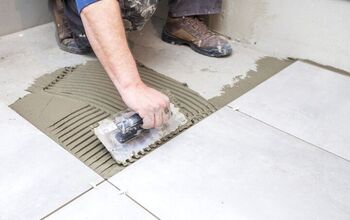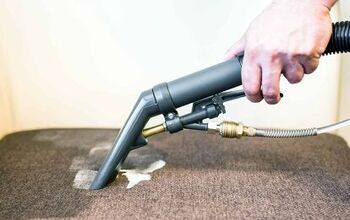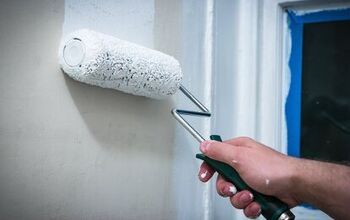How Long Does It Take For Rubber Cement To Dry?

Commonly used in the crafting world, rubber cement has several uses and is a versatile adhesive. Rubber cement can be used for several applications and can stick to just about any surface. This adhesive is extremely popular because it is fast drying, inexpensive, versatile, and easy to use.
If applied as directed with an even thickness throughout the application, rubber cement will take about five minutes to dry. Applying rubber cement in a thick application can increase the drying time to upwards of 15 minutes. Rubber cement is a water-soluble material that can easily be pulled apart and reapplied if a second application is necessary.
To achieve a permanent bond between two surfaces, be sure to apply the rubber cement to both surfaces and then seal the two surfaces to one another. To create a temporary bond between two surfaces, apply the rubber cement to one surface only. Because of the solvents added to this unvulcanized rubber adhesive, many stores will require you to show a form of identification and require the purchaser to be at least 18 years of age to purchase this adhesive.
What Are the Benefits of Using Rubber Cement?
Rubber cement has been around for years, and for a good reason. This glue is a versatile and strong adhesive that has many purposes. Rubber cement can be used as a permanent bond between two surfaces if you apply the adhesive to both surfaces or can be used as a temporary adhesive if the rubber cement is only applied to one surface. Permanent adhesive is recommended for craft projects, and temporary adhesives can be used to create your own Post-It notes.
Plus, rubber cement is a non-toxic and natural adhesive that is made from natural unvulcanized rubber. This glue is water-soluble, so it is easy to remove stains and spills. Plus, rubber cement is relatively inexpensive, easy to use, creates a smooth glued surface, and is incredibly fast drying, making it the ideal adhesive to have in your home. Rubber cement in a standard application will dry in as little as five minutes. If rubber cement is applied in a thick coat, it can take up to 15 minutes to dry.
What is Rubber Cement Made Of?
Rubber cement is a common craft adhesive that has many applications. The base for rubber cement is unvulcanized rubber, which is a naturally occurring material. The rubber is then blended with solvents such as heptane or toluene, hexane, or acetone. The addition of the solvent makes the material liquid enough to be used as an adhesive. Additional elastic polymers may be added to the solution to give this adhesive its sticky property.
Is Rubber Cement Toxic?
Although rubber cement contains natural rubber ingredients, there are some dangers associated with rubber cement. Ingesting small amounts of rubber cement or putting small amounts of this glue in your mouth will not hurt you. Large quantities of this glue can be dangerous, though. Swallowing and ingesting large amounts of rubber cement can damage vital organs, including the kidneys, liver, and brain.
Further, using rubber cement as an inhalant can also be toxic and damaging. Many stores require proof of identification to verify you are at least 18 years of age to purchase this product. If used incorrectly and as an inhalant, this substance can lead to damage to your lungs, brain, and kidneys over time with repeated incorrect use.
What is the Best Way To Remove Rubber Cement?
While rubber cement is an extremely strong adhesive that can bond many types of materials together, it is relatively easy to remove. Rubber cement is water-soluble which contains a natural adhesive called unvulcanized rubber. This material, like other natural adhesives, is water-soluble.
If you inadvertently get some rubber cement on a material by mistake, you can easily remove the glue by:
Step 1: Scrape Off Excess
Try to scrape off the excess rubber cement with either your fingernail or even a nail file. If the rubber cement begins to dry, the dried glue will start to create a ball that can be plucked away from the surface.
Step 2: Use Petroleum Jelly
Wipe a good amount of petroleum jelly over the remaining rubber cement or stain. You can use a cotton swab to help loosen stubborn rubber cement.
Step 3: Wash
If you are trying to remove spilled rubber cement from clothing or fabric, you can simply launder the material after you have removed the excess and applied petroleum jelly. The water from the washing machine, coupled with the soap, should help remove any residual rubber cement from your clothing.
How Can You Prevent Rubber Cement from Drying Out?
Rubber cement will start to dry out as soon as it is exposed to air, which is one of the biggest benefits of using this popular adhesive, and why the adhesive has such a fast drying time. Unfortunately, it can also start to dry in the jar once the rubber cement container is opened, limiting its shelf life.
To help prevent your rubber cement from drying out, you can add some petroleum jelly or grease around the threading on the lid that holds the application brush. Adding some grease to this area can help create an airtight seal once the rubber cement jar is closed. The less air that enters the rubber cement container when not in use, the longer your rubber cement will last.
Can You Revive Dried Out Rubber Cement?
Even if you take preventive measures to help keep your rubber cement fresh and fluid, there is still the chance that your rubber cement will dry out. Rubber cement will dry out when it is exposed to air, and even just opening and closing the lid with regular use can introduce air into the jar.
Luckily, using some common art supplies, it is possible to revive your rubber cement after it has dried out. To revive a dried-out jar of rubber cement, follow the below instructions.
Step 1: Identify the Solvent
While rubber cement is made of natural materials, it always includes a solvent to help make the rubber fluid and viscous. Look on the back of the rubber cement jar and read the ingredients. Most solvents will end in an -ana, -one, -ol, or -one suffix.
Step 2: Purchase Solvent
Most art supply stores will have a range of solvents available for purchase. Make sure you purchase the solvent that matches the solvent on your rubber cement ingredient list.
Step 3: Safety First
Be sure to wear a pair of goggles, a respirator, and thick latex gloves. Take the solvent and your dried rubber cement to a well-ventilated area, preferably outdoors. Mixing the solvent with the rubber cement can release very strong and acidic gasses, which can be extremely strong and damaging if inhaled directly.
Step 4: Mix
Carefully mix just a few drops of the solvent into the rubber cement. Mix the combined ingredients thoroughly. Continue adding the solvent just a few drops at a time until your rubber cement has reached the desired consistency.
Step 5: Seal Tightly
Once you have your rubber cement rehydrated, be sure to seal the jar tightly. Exposing the rubber cement mixture to air is what will cause the adhesive to dry out. Adding some petroleum jelly to the threading on the lid that holds the brush can help create an airtight seal and allow you to store your rubber cement for a longer time before it dries out.
Related Questions
What Can Be Used Instead of Rubber Cement?
Rubber cement is a widely used craft glue because it is strong, easy to use, and versatile. This glue is not always available, but luckily there are plenty of glue substitutes that may work just as well. When a project calls for rubber cement, try to use a 3M glue stick.This type of glue will give you the same smooth finish for your project and is fast drying. Other alternatives can include spray adhesive, double-sided tape, or a product called Elmer’s Craft Bond, a fast-drying craft glue.
Why Do You Need to be 18 to Buy Rubber Cement?
In many large, branded stores, customers must present proof of identification and be at least 18 years of age to purchase certain products, including rubber cement. This precaution is because strong fumes come from this craft supply, and it can be used as a dangerous drug. Using drugs as an inhalant is dangerous and illegal, and many large stores are attempting to prevent the youth from participating in this behavior.

We are a team of passionate homeowners, home improvement pros, and DIY enthusiasts who enjoy sharing home improvement, housekeeping, decorating, and more with other homeowners! Whether you're looking for a step-by-step guide on fixing an appliance or the cost of installing a fence, we've here to help.
More by Upgraded Home Team



























